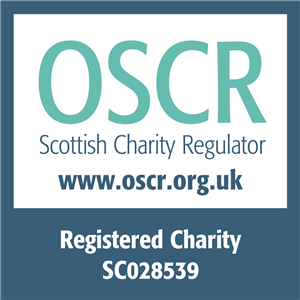St Andrews
The Couper Church
The Splits in the Church of Scotland
by Ian Sommerville
The story of the Presbyterian churches in Scotland in the eighteenth and nineteenth centuries is dominated by the issue of patronage - the claim of right by local landowners and the state to force their choice of ministers on local congregations. Abolished in 1690, patronage was reintroduced in 1712 as a sop to Scottish landowners who "as a class were increasingly looking to England for their cultural models and … wanted to see someone in the manse as polite and friendly to the laird as the average Anglican parson was to the squire." (T.C. Smout)
There was no general support for patronage within the Church of Scotland - but it was the law and the leadership and the General Assembly enforced it. However, not everyone toed the line. On three occasions over the following 150 years, groups of brave and principled ministers decided that enough was enough. These men turned their backs on the cosy certainties of the established church and opted instead for what must have seemed a very uncertain future.
The first secession was that of 1733 to 1740, led by Ebenezer Erskine, after whom the Erskine Church is named. Burntisland's minister, James Thomson, was one of the eight original seceders. The second secession (1752 to 1761) resulted in the formation of the Relief Church under the leadership of Thomas Gillespie of Carnock. The third, and best known, was the Disruption of 1843, which led to the creation of the Free Church. Its leader, Thomas Chalmers, lived in Burntisland, and the Burntisland minister, David Couper, led virtually his entire flock out of the Parish Church in that year.
Patronage was abolished in 1874. The Free Church and the United Presbyterian Church united in 1900 to form the United Free Church, which itself united with the Church of Scotland in 1929. But with each union, there was a significant minority who stayed outside and who continued to bear the name of their original church, demonstrating that their independence stemmed from more than simply the issue of patronage. Nowhere is this more clearly demonstrated than here in Burntisland, where we have the Erskine congregation of the United Free Church.
A Short History
Taken from the 1961 Centenary Brochure
The congregation of St. Andrew's first came into' being in 1843, when the Disruption within the Church of Scotland took place. Four hundred and seventy-four Ministers and about a quarter of a million lay people left the Establishment to form the Church of Scotland FREE. The Disruption was the final break in a conflict, within the Church, which had gone on for years over the question of Patronage. In 1733 and again in 1761, smaller breakaways had already taken place over the same question. Another •conflict within the Church and contributing to the Disruption, was that between the Moderates and the Evangelical Party.
On the 17th July, 1843, there was signed an Act of Separation and Deed of Demission. The Dissenters at Burntisland constituted themselves into a Kirk Session of the Free Church of Scotland, under the Free Presbytery of Kirkcaldy, and with the Rev. David Couper as their Minister. The Act of Demission was approved by the General Assembly on 26th May, 1844.
The first Free Church was built on a site in Leven Street gifted by George Young, Leith. The building was erected at the sole charge of the brothers John and Robert Young, members of the congregation, and the furnishings of the Vestry, Pulpit and front of the gallery were provided by the Misses Helen and Elizabeth Young. The Church had a school-room underneath, the first Teacher being John Davidson.
In 1845 the state took over responsibility for the relief of the poor, and in 1872, for the education of children, both of which fields of work had been the responsibility of the Church's Kirk Sessions. Cases of Discipline were fairly common, the offenders often being brought before the Kirk Session and solemnly rebuked and admonished. Usually, on confession and penitence, they were re-admitted to the full privileges of the Church. " Fast Days," now known as Preparation for Communion, were observed. The dispensing of the Lord's Supper lasted for several days, neighbouring Ministers assisting. The Minister of the Church preached what was known as " the Action Sermon."
There was no instrumental music at church services and Precentors led the Praise. " Tokens" were used for admission to Communion until 1884 when Communion Cards were introduced for the first time. Deacons were first appointed in 1844 and were of an equal number to the Elders.
A New Building
The present building was begun in 186(7 and completed just over a year later. It was opened for public worship on September 1st, 1861. bv the Rev. Dr. Alexander Beith, of Stirling. It is interesting to note that Dr. Beith was the father of Ian Hay, well-known author of " The First One Hundred Thousand," a book about the First World War.
In 1883, a committee was formed to continue the work of the Mission at Binnend, and in 1889 a new Mission Hall was built there at a cost of £161 2/5. The Deacons' Court agreed to manage the finances of the Hall on the understanding that no responsibility was accepted for any maintenance outlay. The Mission continued to function until the people were gradually moved to the new houses at Meadowfield in the early 1930s.
1893 marked the Jubilee of the Free Church and on May 16th, a Jubilee Meeting was held at which Mr Kinmont read a short historical sketch of the Congregation. The Very Rev. Professor Thomas Smith, D.D., a former Moderator of the General Assembly took part at the Meeting.
The following year marked another Jubilee, that of Mr George Robertson, an Elder, who had completed 50 years as Sabbath-School Teacher and Superintendent. To mark the occasion, he was presented with an easy chair, a writing desk, a silver watch and a sum of money.
In 1897, the Church acquired the properties at the corner of Union Street and Somerville Street for the sum of £825.
Many of the Original Secession Churches had united in 1820 to form the United Secession Church, and, in 1847, this body united with the Relief Church to form the United Presbyterian Church. In 1900 a further Union took place between the United Presbyterian Church and the Free Church; the new Church being named the United Free Church of Scotland. In Burntisland, the Free Church was now named " the Couper United Free Church of Scotland " in memory of its first Minister.
On October 22nd, 1901, the present Organ was installed at a cost of £504. A grant of £200 was received from the Carnegie Trust towards the cost. In the same year Mr Kinmont donated Collection Plates for the purpose of making the Collection part of the service instead of taking the Collection at the door on entry.
The Session Minutes of December 5th, 1905, record the resignation of Mr Archibald Cameron as Session Clerk, a position he had held for the long period of 35 years.
The year 1906 saw the death of the great Church leader, Principal Rainy. He was one of the foremost men in the talks which led to the union of 1900, and became first Moderator of the United Free Church Assembly.
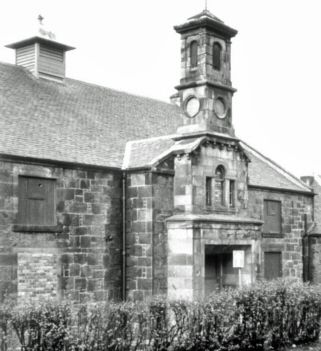
The Original Couper Church from
The site of the Free Church in East Leven Street, at the corner of Kirkgate, showing the preserved bell tower and entrance. Norman Mackie tells us that, after the congregation moved to the High Street in 1861, the building became Frank Quarton's grain store. It then took on a new life as Burntisland's first picture house, the Palace, which closed in the mid 1920s. After that, it served as a badminton, boxing and athletic club; and latterly as a store, used by James Ferguson. It was destroyed in a fire on 28 September 1977.
The single story building in the centre ground is the Free Church school, built to provide an alternative to the Parish School which was at that time under the control of the Church of Scotland. It became Leven Street Public School on the introduction of state education in 1872. With the opening of the new Burgh School in Ferguson Place in 1876, its future seemed in doubt. However, by 1889, the new school was becoming overcrowded, and the Leven Street school was allocated the children from the landward area of the parish. It was then known locally as the country school. More recently, the building was the meeting place for the Binnend Women's Rural Institute. It is now owned by the local Scouts, who have plans to convert it to a modern hall and meeting place.
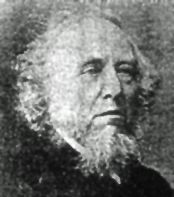
Rev. David Couper
David Couper was born in Dunfermline in 1809. He served as minister of Burntisland Parish Church from 1834 to 1843; and as minister of Burntisland Free Church from 1843 to his death in 1882.William Erskine gives us this short and colourful pen portrait of David Couper: "The Rev. David had become a doctor as he advanced in years and added to his reputation as a gifted preacher. He had come to be revered, both for his faith and work, and looked up to, as others of a different faith regard their Pope. He became a guide, philosopher, and friend to many, even to those who did not worship under his banner. Not only did he gain the friendship and respect of the elders, but he inspired the youngsters with a holy fear. Bad words and bad manners were laid aside when the 'Doctor' appeared. Wrangling over a game at the 'bools' ceased on his approach."
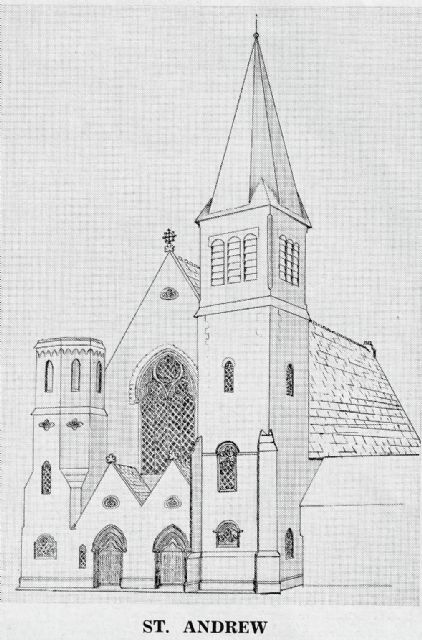
Original sketch of St Andrews circa 1860s
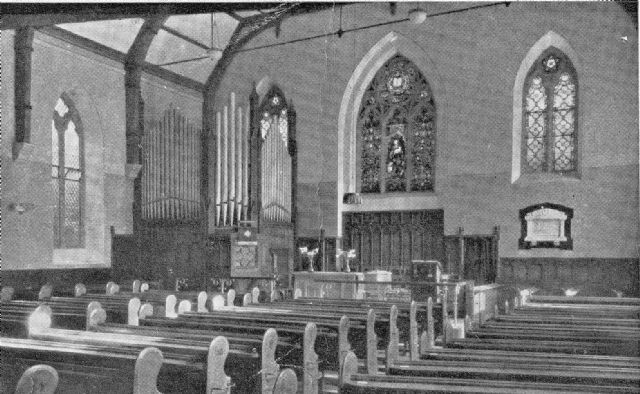
Interior from the 1960s
Amalgamation of St Andrews Church
by Ian Sommerville
With the death of the St Andrew's Church minister, the Rev Easton, in 1976, and with the gradual decline in church membership throughout the country, the opportunity was taken to unite the congregations of St Andrew's and St Columba's as Burntisland Parish Church, and the first joint service was held in the St Columba's building on 13 March 1977.
Finding new uses for redundant church buildings can often be a problem. Not so with St Andrew's Church, however. In 1983 it was converted to St Andrew's Court sheltered housing for the elderly. David Couper's Free Church, now with its striking blend of the old and the new, will continue to dominate the east end of the High Street for years to come.
